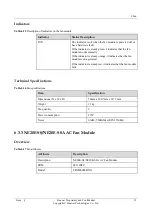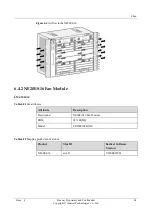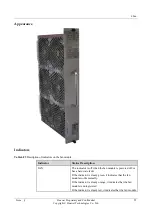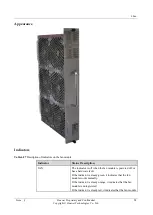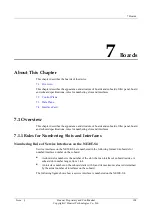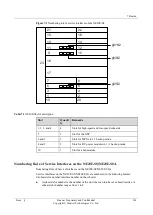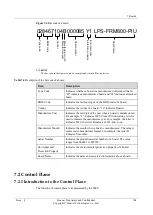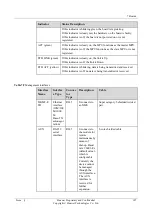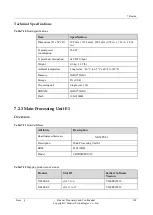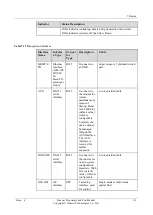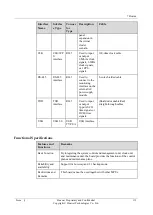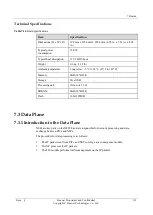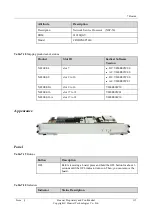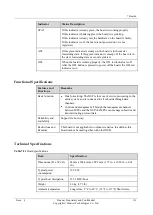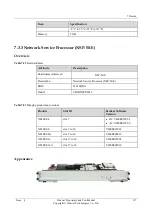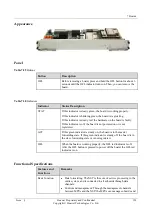
7 Boards
Issue ()
Huawei Proprietary and Confidential
Copyright © Huawei Technologies Co., Ltd.
105
The device can be equipped with a single MPU or double MPUs (in backup mode).
In the case of double MPUs, when the master MPU is working, the slave MPU is in the
standby state. You can connect either the management network port on the master MPU or
that on the slave MPU to the device. The slave MPU exchanges information (heartbeat
messages and backup data) with only the master MPU. Data consistency between the master
and slave MPUs is ensured through high reliability mechanisms such as batch backup and
real-time backup. After a master/slave switchover, the slave MPU immediately becomes the
master MPU. You can configure a default master MPU. During the start process, the MPU
that you configure wins the competition and becomes the master MPU.
MPUs support two switchover modes: failover and manual switchover. The failover is
triggered by serious faults or resetting of the master MPU. The manual switchover is triggered
by commands run on the console interface or management interface.
The MPU integrates multiple functional units. By integrating the system control and
management unit, clock unit, and system maintenance unit, the MPU provides the functions
of the control plane and maintenance plane. The functions of the MPU are detailed as follows:
System control and management unit
The MPU is mainly responsible for processing routing protocols. In addition, the MPU
broadcasts and filters routing packets, downloads routing policies from the policy server.
The MPU manages the NSPs and communicates with the NSPs. The MPU implements
outband communication between boards. The MPU manages and carries out
communication between the NSPs and slave MPU through the outband management bus.
The MPU is also responsible for data management. The system configuration data,
booting file, upgrade software, and system logs are stored on the MPU. The EUSB card
on the MPU functions as a mass storage device for saving data files including system
files, configuration files, and logs, and is not hot-swappable.
The MPU manages and maintains the device. Through management interfaces such as
serial interfaces and network interfaces on the MPU, you can manage and maintain the
device.
System clock unit
The system clock unit of the MPU provides NSPs and PICs with reliable and
synchronous SDH clock signals.
System maintenance unit
The system maintenance unit of the MPU collects monitoring information, remotely or
locally tests system units, or performs in-service upgrades on system units.
Through the Monitorbus, the MPU collects the operation data periodically. The MPU
produces controlling information, such as detecting the board presence and adjusting the
fan speed.
The MPUs work in 1:1 hot backup mode, improving system reliability.
7.2.2 Main Processing Unit E
Overview
Table 7-5
Board attributes
Attribute
Description

